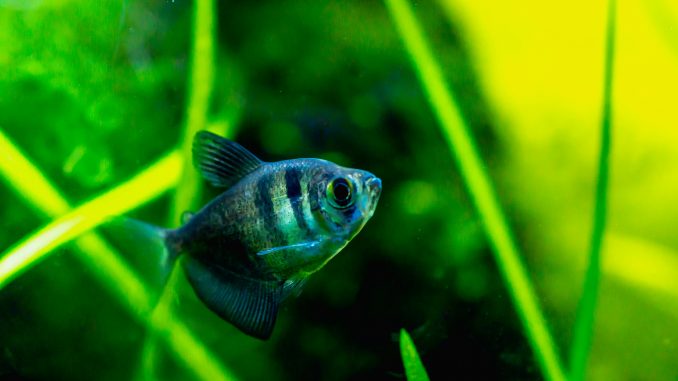
Are you looking for a little extra splash for your community aquarium? The Black Skirt Tetra may be just what you’re looking for. They’re schooling fish that are fun to watch, and they have a unique black translucent hue that really brings something extra to the aesthetic of your tank.
Read on to discover everything you need to know about successfully raising Black Skirt Tetras. I’ll talk about their origin, behavior, tank requirements, diet, and much more. By the end of this article, you’ll wonder why you waited so long to get some Black Skirt Tetras.
TABLE OF CONTENTS
Black Skirt Tetra Facts & Overview
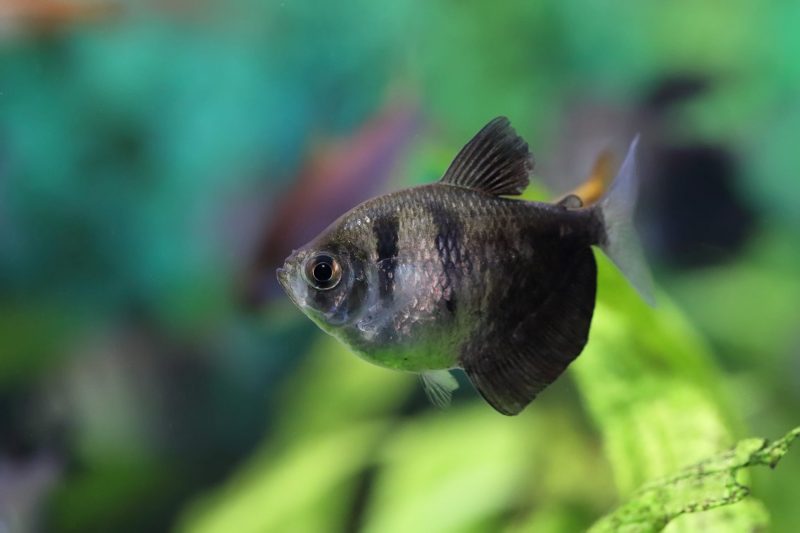
| Category | Rating |
| Care Level: | Moderate |
| Temperament: | Mildly aggressive |
| Color Form: | Silver, black, white |
| Lifespan: | 3-5 years |
| Size: | 1-2.5 inches |
| Diet: | Omnivore |
| Family: | Characidae |
| Minimum Tank Size: | 15 gallons |
| Tank Set-Up: | Freshwater with plants and rocks |
| Compatibility: | Peaceful with most fish |
Black Skirt Tetras (Gymnocorymbus ternetzi) hail from South America, mostly in Argentina, Bolivia, Brazil, and Paraguay. These lovely fish will really spice up your community tank with their distinctive Characidae shape and gradient coloring.
In South America, they live in the Paraguay River Basin and the Guapore River and are also known as Blackamoors, Black Widow tetras, and Petticoat Tetras.
Though they are successfully bred in captivity, they have a rather short lifespan in captivity, and only live between 3 and 5 years. Indeed, Black Skirt Tetras suffer when they are not provided with healthy habitat, so it’s vital to keep your aquarium pristine and keep their stress to a minimum.
Typical Behavior
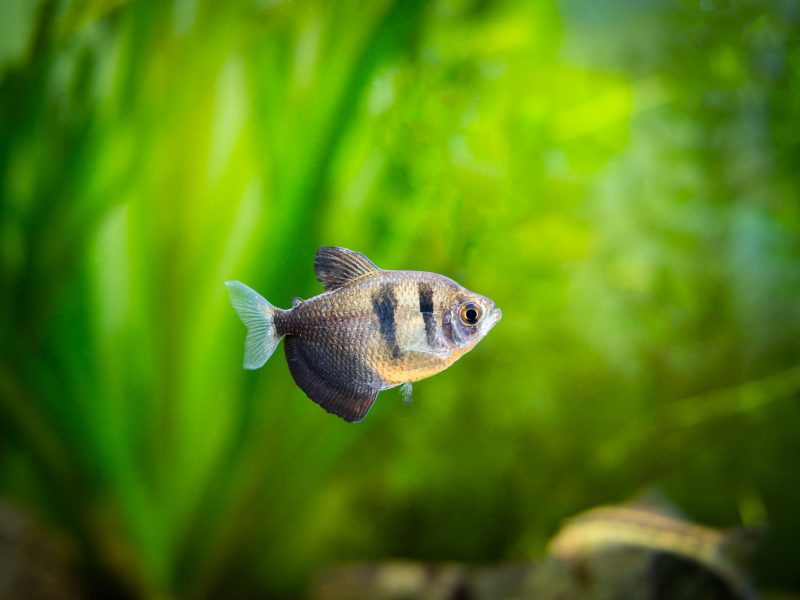
Aside from a penchant for the flowing fins of fish like Angelfish and Betta Fish, Black Skirt Tetras are fairly peaceful tankmates. Show them long, flowing fins, however, and they will definitely go into nip mode.
Their daily schedule involves swimming around the tank to see what the latest happenings are. Like a group of high school kids, Black Skirt Tetras schools cruise around the neighborhood checking out the action.
It’s fun to see them swimming in unison, and also interesting when one leaves the group for a little alone time before rejoining the school.
Although they are the aggressors with long-finned fish, overall they are pretty timid and will appreciate hiding places. Caves, plants, rocks, and wood incorporated into the aquascape will give them spots for refuge. In addition, because Black Skirt Tetras are mid-tank swimmers, tall plants are the best choice.
Appearance
Like other members of the Characidae family, Black Skirt Tetras are recognizable by their shape, which is tetragonal, like a rectangular prism cube. The front of their bodies are taller than the back, and their tails have a significant taper. Some Black Skirt Tetras have short fins while others have longer, flowing fins.
Fun Fact: The tetragonal shape is a description of one of the seven crystal formation patterns, one in which a cube becomes a rectangular prism with a base that is square. This feature describes the different front and back height of the Black Skirt Tetra.
Black Skirt Tetras are pretty small, with an average size of 1-2 ½ inches (2.5-6.4 cm). I’ve heard some reports of 3-inch Black Skirts, but that’s a rare occurrence and more likely to be seen in the wild rather than in captivity.
Black Skirt Tetras have a stunning color pattern, with a translucent silver hue that is lighter at the fish’s head and darker at the bottom, where it is a darker black. This gradient hue pattern is the origin of the Black Skirt Tetra’s name.
On the front half of the Black Skirt Tetra’s body, you’ll see two distinctive vertical black stripes, and
Their anal and dorsal fins are also black. Interestingly, as they mature, their dark colors begin to fade, and by the time they reach the end of their lifespan at about 5 years, they are much paler.
Pro tip: Fading will occur with age, but providing an environment in which your Black Skirt Tetras can thrive (healthy diet, clean water, no stress) will promote color vibrancy.
Distinguishing between males and females:
Although the differences between the female and male Black Skirt Tetras are rather indistinct, the females tend to be larger and a little rounder. We find this with many freshwater fish since the females are the ones carrying the eggs. The subtle distinctions are more noticeable when they are preparing to propagate.
Another way to spot the male Black Skirt Tetra is by peering at his anal fin, which is larger than the females.
Habitat and Tank Conditions
Black Skirt Tetras need a minimum of 15 gallons–remember that they are schooling fish and will be in a group. If you can swing a 20-gallon tank, that is even better. Black Skirt Tetras love to spend the day swimming, and they’ll appreciate the extra length that a bigger tank provides.
For the substrate, you can choose gravel or dark sand that mimics the dark bottom of their natural habitat. The material is not as important as the color, since they rarely visit the tank bottom.
You can also place driftwood, rocks, and caves for them to hide in.
For their aquascape, go for taller plants that will reach the mid-level of the tank, since that is where they spend the bulk of their time. The bigger your tank, the more plants you can add; Black Skirt Tetras are active swimmers, and they love swimming through the plants, but they do need enough room to swim.
I recommend planting in the background as well as the perimeter so that they have vegetation to swim through and hide in, yet still have space to swim like the wind.
But certainly adding plants will make your tank come to life as you watch a group of Black Skirt Tetras darting through the lush aquascape that you’ve created!
Other considerations
Black Skirt Tetras will display more vibrant colors if you offer dim lighting.
I’m about to get into water conditions, so I’ll segue here by mentioning that because Black Skirt Tetras need ultra-clean water, you’ll need a decent filter that can filter out ammonia, nitrate, and the waste that spikes those levels.
Water Conditions
When Black Skirt Tetras (and, let’s face it, many other freshwater fish) live in subpar water conditions, their stress increases making them more susceptible to disease. Black Skirt Tetras are particularly sensitive to both water parameters and cleanliness.
In the rivers of South America, the Black Skirt Tetra’s native habitat, the waters are warm and somewhat acidic, so you want to recreate those conditions in your home aquarium. They prefer soft water.
In addition to using a filter to keep ammonia and nitrate levels low, you should perform a 25-50% water change bi-monthly.
The optimal parameters to ensure a close match to their natural habitat are:
- pH levels: 6.0 to 7.5
- Water hardness: 4 to 8 dKH
- Water temperature: 70°F to 85°F (21.1-29.4°C)
I recommend testing the water often so that you can maintain uniform parameters, as a shift in conditions can harm your fish.
What Size Aquarium Do They Need?
15 gallons is the minimum I would recommend for Black Skirt Tetras, although as I mentioned, more space is better. You’ll want to go even bigger if you have a community aquarium with different kinds of fish, or if you want to keep a larger school of Black Skirts. Since they’re such active swimmers, you need to avoid overcrowding, which will both stress them out and prevent them from getting the activity that they need.
How Many Can Be Kept Per Gallon?
A 15-gallon tank is sufficient to hold a school of 6 Black Skirt Tetras.
Tank Mates
Peaceful tankmates are the way to go with Black Skirt Tetras. It’s true that they can be mildly aggressive with fish that have flowing fins, but the truth is that some varieties of Black Skirts also have flowing fins, and they can easily become targets of aggressive fish that might nip at their fins.
Good choices are tetras that are a little less active than Black Skirt Tetras. Black Neon, Cardinal, and Neon Tetras are all less active and also smaller. Because Black Skirt Tetras are mid-level dwellers, peaceful bottom dwellers are also good choices. Danios, Dwarf Cichlids, and Rasboras are good bets.
Suitable Tankmates for Black-Skirt Tetras
- Bolivian Rams
- Cardinal Tetra
- Celestial Pearl Danio
- Chili Rasbora
- Cory Catfish
- Dwarf Gourami
- Harlequin Rasbora
- Honey Gourami
- Neon Tetra
Keeping Black Skirt Tetras Together
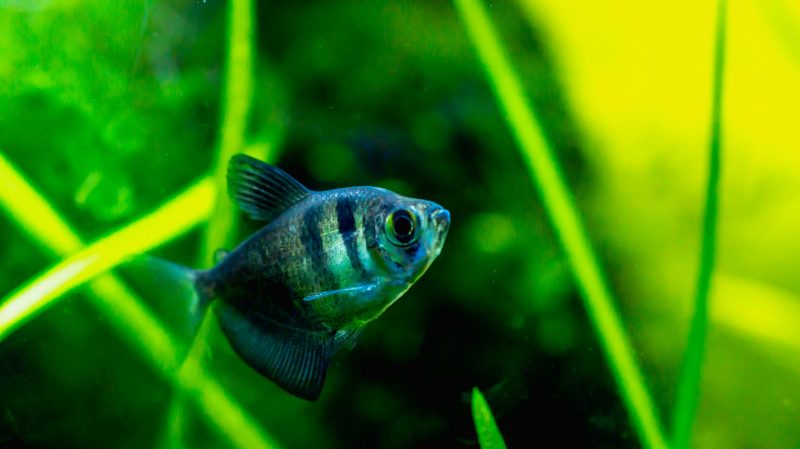
To reduce stress and increase joy, I recommend keeping at least 6 Black Skirt Tetras together. You definitely do not want to try to raise singles; these guys rely on each other and will not thrive on their own.
Additionally, because they feel safe in groups, you will see less aggression and nipping when they are surrounded by their crew.
Diet
In their natural habitat in the rivers of South America, Black Skirt Tetras exist on insects and plants; they are not finicky eaters.
In captivity, they are able to thrive with flakes or pellets, so you don’t need to get too fancy with their meals. However, I’m always an advocate for recreating a freshwater fish’s environment in the wild, to the extent possible.
Even when fish are bred in captivity, they seem to have an affinity for their conditions of origin. From diet to aquascape to water conditions, mimicking their natural habitat will result in fish that are stress-free, more active, and display more vibrant colors.
To that end, you may want to supplement flakes and pellets with frozen and live food: try blackworms, bloodworms, brine shrimp, daphnia, and tubifex.
You may even find them getting their green on with algae and plants.
In terms of schedule, the flakes or pellets should be offered daily, but only feed as much as they can consume within a 5-minute window. Live and frozen food supplements are occasional treats.
Care
Black Skirt Tetras are not difficult to care for; I have marked them as moderate level because of their need for such a clean tank. A 3-5 year lifespan in captivity is relatively limited, and you want to do everything you can to keep them happy and healthy during their short lives.
My best suggestions are to reduce stress by
- Keeping the tank clean
- Maintaining steady water parameters
- Providing hiding spaces and plants to swim through
- Protecting them by keeping aggressive fish out of the tank
- Simulating their native South American environment to the greatest extent possible.
If you do not meet the above expectations, your Black Skirt Tetras are more susceptible to bacterial, fungal, and parasitic diseases such as dropsy, fin rot, fish fungus, and ich.
Ich, in particular, is dangerous for Black Skirt Tetras. A parasitic infection marked by white spots all over the fish, ich can be fatal. Stress and poor water conditions result in ich, so you have the power to prevent most cases of ich.
If your Black Skirt Tetras do contract ich, you should quarantine the affected fish (ich is very contagious!) and treat them with a copper-based medication.
Pro tip: Copper is fatal to shrimp and snails, so if you have these in your tank, be sure to treat the fish with Ich in a separate tank.
Breeding
Breeding for Black Skirt Tetra requires a separate breeding tank since the male and female Black Skirt Tetras are not helicopter parents; in fact, they have few parenting skills at all and will actually eat the eggs and the fry when given the opportunity.
The breeding tank should be 10 gallons and should have the same water parameters as the main tank. Make sure the water is still soft and slightly acidic. You can add plants to the tank.
Pro tip: Using artificial grass, a net, or a spawning mat allows some cover for the eggs and protects them from their cannibalistic parents.
A bonded pair of Black Skirt Tetras can be placed into the dedicated breeding tank. Feed them live foods that are rich in protein for 7 to 10 days prior to breeding. Feeding should occur 3 times per day. When the female’s belly swells with eggs, the male will start chasing her around.
Note: If the male fish is too aggressive and harms the female, remove him from the tank. You can try to breed again after you do another week of preparation.
If the mating game is successful, the female will lay about 1,000 eggs; Black Skirt Tetras are scatterers, so the eggs will land all over the tank and sink to the bottom (that’s why I recommend the spawning mat.)
After the eggs are laid and the male has fertilized them, you should remove the parents and return them to the community tank.
It takes 1-2 days for the eggs to hatch, at which point the fry will get their nutrients from the egg sac. After several days, you can offer infusoria or powdered fry food.
After a couple of weeks, the fry can handle baby brine shrimp. It’s important to keep the fry out of the community tank until they are not in danger of being eaten by other fish (including their parents.)
Pro tip: Prewash any elements you are putting in the breeding tank in a salt bath to ensure that no pests or snails are present, for they may try to eat the eggs.
Are Black Skirt Tetras Suitable for your Aquarium?
Whether you are hoping to breed these unique fish or just looking for a standout addition to your community tank, Black Skirt Tetras will not disappoint. From their signature body shape to iconic coloring, they have it all in the appearance department. But Black Skirt Tetras are not just another pretty face; their swimming and schooling habits will continually entertain you and bring a new sense of life to your tank.
As long as you don’t pair them with long-finned fish, you will find Black Skirt Tetras a peaceful and playful addition to your tank. In fact, you might decide you want to have a dedicated tank just for a large school of Black Skirt Tetras–they are that fun!
Remember that Black Skirt Tetras need friends; keep them in a group of at least 6, or more to really get the party started. I think you’ll really enjoy having a school of Black Skirt Tetras–I never get tired of watching them!
Are Black Skirt Tetras your favorite community tank fish? Let us know why in the comments below…
FAQ
Can I feed my Black Skirt Tetra live food?
Yes! Actually, supplementing their main diet of flakes or pellets with live or frozen meaty proteins is a great idea and is reminiscent of their habitat in the wild.
In the rivers of South America, Black Skirt Tetras eat insects and plants, so providing brine shrimp, insects, and worms is a great way to help them thrive. Just remember that the live and frozen foods should be offered as a treat rather than having it be their main source of protein.
By the way, the Black Skirt Tetra will also enjoy some algae from time to time.
Do I need to have a separate breeding tank?
I do recommend that you have a dedicated breeding tank. Black Skirt Tetras are not going to win any parent of the year awards and will eat their own eggs and their own fry when given the opportunity.
A separate breeding tank reduces the chances of cannibalism because you can pull the male and female out of the breeding tank after the fertilization process takes place, leaving the eggs to develop and hatch in peace, and subsequently allowing the fry to grow safely and avoid being eaten.
What is the average lifespan for Black Skirt Tetras?
Black Skirt Tetras have an average lifespan of 3-5 years in captivity. Their chances of living on longer of those two numbers increase dramatically if you keep their tank clean, protect them from stressful situations, and surround them with other Black Skirt Tetras.
How long does the female Black Skirt Tetra carry her eggs?
Actually, Black Skirt Tetras are scatterers, so once the female fills up with eggs, she will scatter them all over the tank, where the male fertilizes them and they hatch within 1-2 days. Amazingly, female Black Skirt Tetras lay up to 1,000 eggs during a single breeding period, so it is no surprise that you can see that her belly is swelled with eggs before she scatters them.

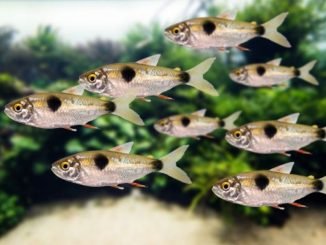
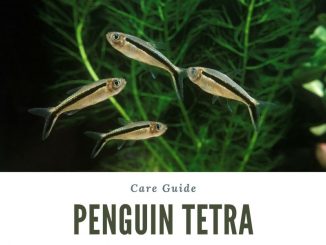
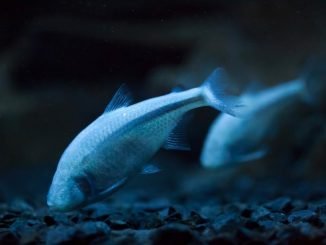
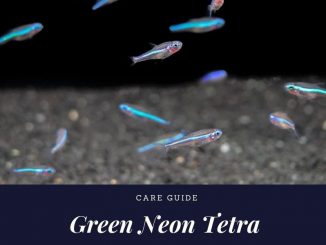
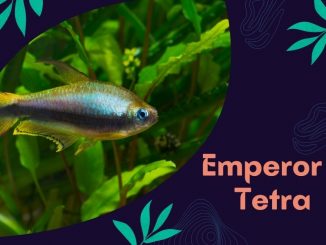
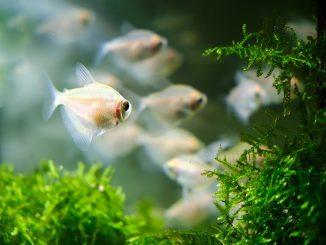
I love the 3 Black Skirts we have in a 55 gal. community Tetra tank. They only “bother” each other and are beautiful when they swim on a group.
Hi I have black and white widow tetras and they are lovely and get on well with all my others fish,you can tell the sex of these fish as the males have a longer top fin than females x😉
My black skirt has been “pregnant” for at least two months.she is swelled up like a tick. Three times now a flesh colored blob hangs out of her rear for a few days then its gone. 2 males follow her around a bit, but not constantly. Whats up with this anyone know?